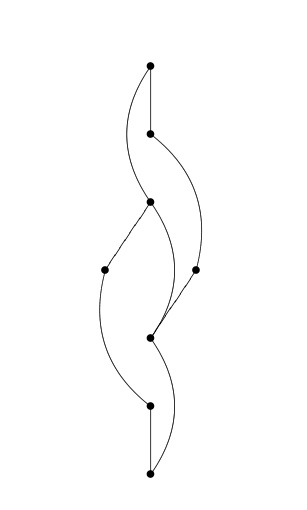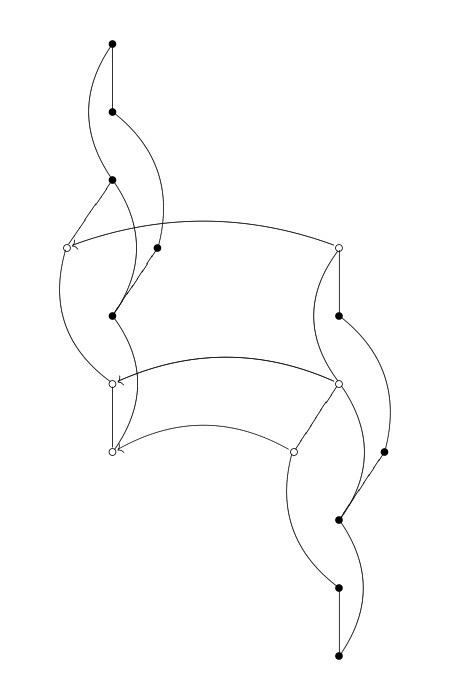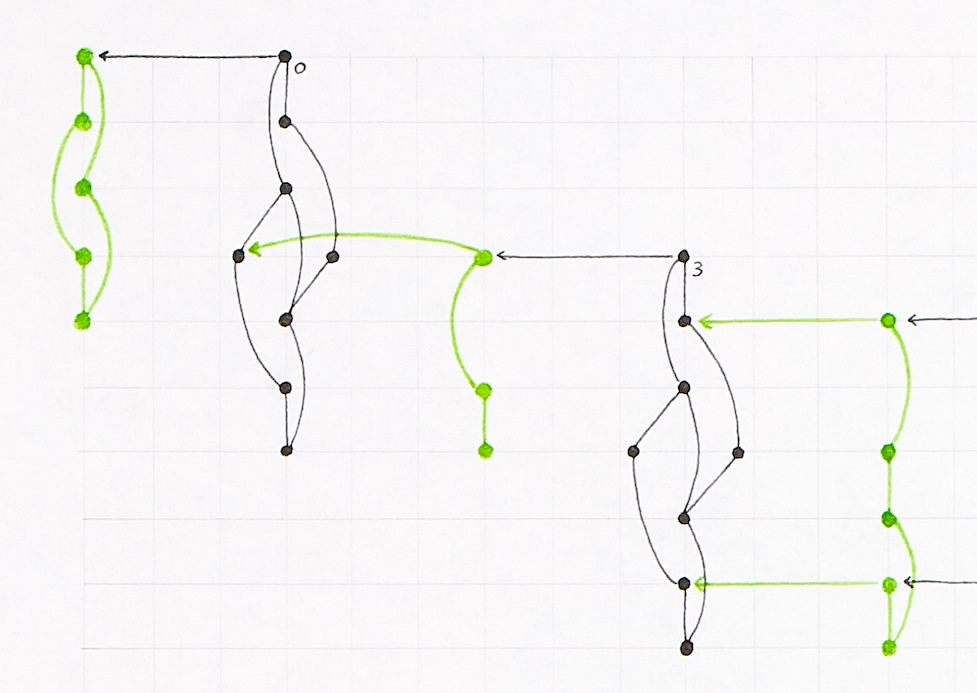Here is a copy of A(1) for reference.

The vertical groups are modules over the algebra A(1), alternating between a module drawn in black and a module drawn in another color. The horizontal arrows connecting them are drawn in the color of their source, and have no other meaning.
The modules in black are the 'boring ones': they are composed of identical
copies of A(1) except for how high or low they are located.
Here is a copy of A(1) for reference.

The modules drawn in color are the 'interesting ones'. In each drawing, they are close relatives of one another; in fact, any one of them determines all of the others. Drawing them in color and all in the same color was intended to emphasize this relationship and distinguish them from the other families. The color modules in different drawings are not related in this way. The actual colors chosen were determined by the inks available; in particular I wanted the color and the black to be of roughly equal intensity.
Any two adjacent black modules and the composite horizontal arrow between them completely determine the whole diagram. The color module to their left is what remains of the leftmost black module after erasing anything which comes from the right module. The color module to their right is the part of the rightmost black module which goes nowhere. And the color module between them is the part of the left module which comes from the right one.
Here is an example taken from the beginning of the Joker.


In this, you can see the "question mark" with three dots that is between them and in common to them as both the source and target of the arrows. The "Jokers hat" at the left corresponds to the 5 solid black dots in the leftmost A(1), and the green module with 5 dots to the right of this is similarly the part of the rightmost A(1) that isn't included in the common 3 dot submodules.
In the extracted, simplified, version, all the arrows between the right and left modules are given, even though the bottom two are implied by the top one since they are required to respect the vertical lines and arcs inside the modules. In the drawings, these implied arrows are left out: they clutter the image and make it less graceful.
In contrast, any one of the color modules completely determines the whole drawing. In this sense, the color modules are far more interesting than the black modules. Put another way, the objects in color are equivalent to the arrows between the black objects. The same information is there at a different level.
In the first two drawings, The Sphere and The Joker, the periodicity is visible: every four steps a color module is reproduced; but each time, another 'flag' is attached, as in the first, fifth and ninth steps for the Joker:

|

|

| ||
| Step 1 | Step 5 | Step 9 |
This is utterly uniform: the 'flag' is attached to Step 2 to get Step 6, to Step 6 to get Step 10 (not drawn), etcetera.